
Birders are, as far as I can tell, not particularly fussy about where they rest at the end of the day. In part this is because, for many travelling birders, sleep is a resentfully given concession towards bodily needs, rather than an essential part of a balanced life. Birders do not, as a rule, sleep in. Hotel breakfasts are a rarely eaten extra. Hotel rooms exist only to fill the necessary hours between the last drink of the night and the early start the next morning. A nice hotel room is never exactly rejected, and can certainly be appreciated, but it doesn’t come close to being essential either. If, at a particular birdy location, the choice is bad hotel or no visit, birders go for the bad hotel.
Me, I like nice hotels. An so its nice to report that if you’re in the market for a nice place to stay in the Underberg region of Natal you could do a lot worse than Moorcroft Manor. And if you ever want to do the epic Sani Pass, and you do even if you don’t realise it yet, you want to go to the Underberg. What sets Moorcroft Manor apart from the other (lovely I rush to add) places I stayed at in Southern Africa was the sheer numbers of birds I could see in the grounds. Moorcroft Manor isn’t just a lovely place to stay, its a great birding location in its own right.
The hotel is set in a small agricultural community at the foothills of the Drakensberg Mountains. Of course, it rained on and off for most of the time I was there, so we never saw the mountains from the hotel till the last day. The small community it was in reminds one of a small New Zealand country town or village, and the manor was set back from the road along a long tree-lined driveway. The large areas of lawns behind the hotel ended in a small lake, and meadows of various grass heights surrounded the gardens.
Around the hotel Amethyst Sunbirds fussed over the flowers and Common Fiscals (a type of shrike) and Fork-tailed Drongos perched watchfully, waiting for prey to leap on. Groups of Cape Turtle Doves feeding on the grass were occasionally joined by a nervous and much larger Rameron Pigeon, and Southern Grey-headed Sparrows and a single Bokmakierie hoped around as well. Above the gardens a wheedling just fledged Gymnogene begged fro food from its long suffering parent. In the larger bushes Spectacled Mousebirds clambered in their laboured way to reach the tastiest leaves; due to the lack of sunshine I didn’t get to watch them sunbathing in their peculiar but endearing way. Mousebirds are a uniquely African family and they really brought it home to me that I was back in Africa after a decade.
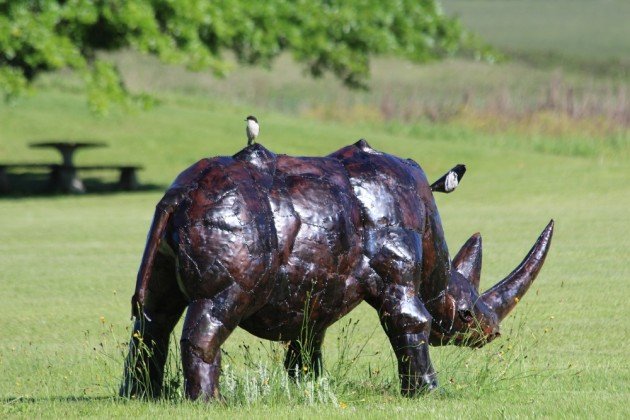 Common Fiscal using a sculpture as a perch to watch for prey
Common Fiscal using a sculpture as a perch to watch for prey
Another group that sings Africa to me are the antelopes. Yes, they’re not birds, and yes, they aren’t restricted to Africa, but it is Africa that they are that their most diverse and most common. And even though Moorcroft is set in fairly developed agricultural land I was able to see two species out and about from the gardens; a few Common Reedbuck in the tall meadow outside the gardens and a Common Duiker bounding through the garden one morning.
It was perhaps unsurprising that the lake at the end of the garden attracted the lion’s share of the birds. Red-knobbed Coots and Little Dabchicks patrolled the water’s surface, and every now and then a nervous flock or Yellow-billed Duck would land and then quickly leave. Larger waterfowl included the snake-like African Darter, the White-breasted Cormorant (which may or may not be the same species at the Common Cormorant), the smaller Reed Cormorant (an African freshwater speciality) ubiquitous Egyptian Goose and the massive Spur-winged Goose. And the Black-necked Heron was an imposing presence as it stalked around the edge. Above the water Barn and White-throated Swallows dashed after insects.
Egyptian Goose flyover
The reeds around the lake alternated between drab LBJs and brightly coloured jewels. In the case of some of the weavers, like the Southern Red Bishop, the alternation was contained within a single species. Male bishops certainly rank among the most gaudily coloured of all birds, the deep orange red of the males defies belief. The lake also held a couple of brightly coloured kingfishers, I even saw a Malachite Kingfisher chasing an African Pygmy Kingfisher. Contrast this to the drab African Reed Warbler or the Little Rush Warbler, or the Levaillant’s Cisticola, all LBJs I was able to identify here by their calls. Cape Weavers also nest in the reeds, which is perhaps why a stunning green Dideric Cuckoo was calling loudly from the tree on the edge of the lake. That wasn’t the only brood parasite/host pair that could be seen around the lake either, as tiny Common Waxbills fed on the ground near where the flamboyant Pin-tailed Whydah displayed.
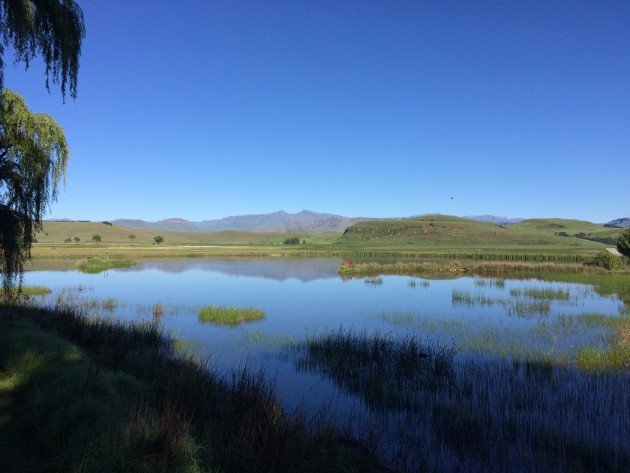 The lake with the Drakensberg Mountains in the background
The lake with the Drakensberg Mountains in the background
The fields around the gardens added some other great birds. The tall flower studded grasses to the north were a mess of seed-eaters from the Red-billed Quellea to the astonishing Long-tailed Widowbird, a sparrow-sized bird with a massive tail twice as long as its body. To the west a large piece f irrigation machinery served as a perch for a large flock of Amur Falcons. And all over large White Storks and Grey-crowned Cranes stalked after their prey.
White Storks are magnificent birds
And that’s before you leave the grounds.
(I feel obliged to point out the hotel is very comfortable too, and has excellent wine, food and service).


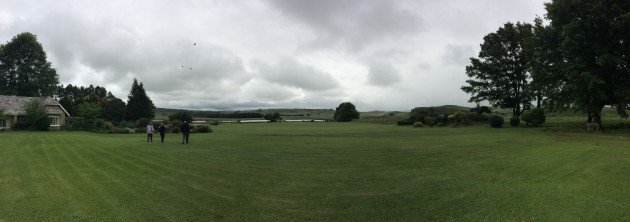
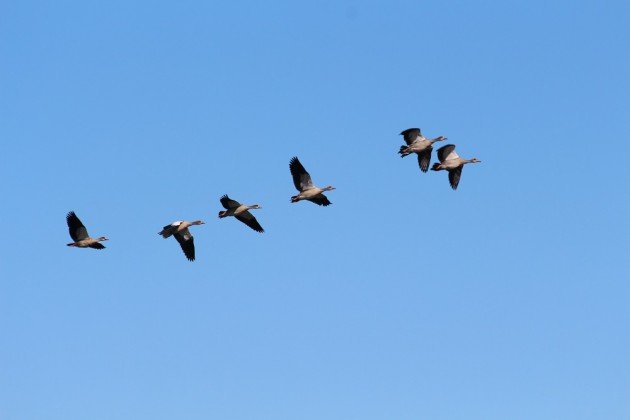
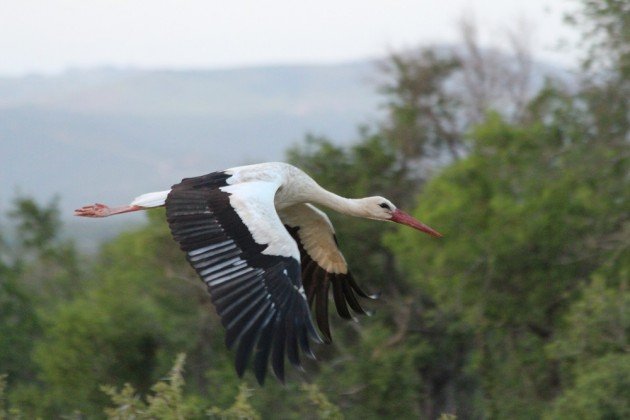











You mean you actually slept there during the night instead of going for night walks?!? What a waste of birding time! 😉
By the way, I’ve always found camps, camping grounds etc in Namibia to be excellent birding spots because they have green vegetation and open water. I even took my binoculars with me when walking from the tent to the campground restrooms in the morning.
We thought all birders carried their binoculars when going to the bathroom in the bush! Especially if you are just going behind a bush or tree! 🙂
Tinalandia in Ecuador has my vote. It is very personalized birding with a small staff of locals who inherited the “golf course” from a Russian Princess. She, floating in pale chiffon and huge brimmed hat, made an appearance at dinner time to see that the guests where properly attended. That was 1963. I understand the place needs a bit of a brush up but it is perfect for a first visit to Ecuador since its elevation provides birds from the coast mingling with their mountain fellows. The rooms are comfortable but not fancy. You will sleep well.